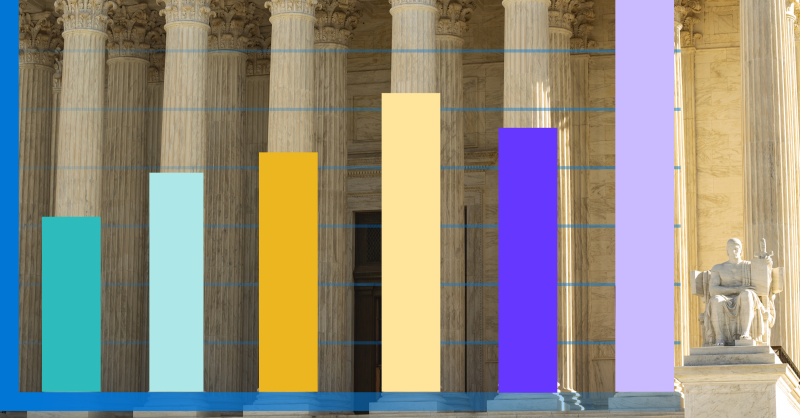
CUNY Institute for State & Local Governance
@CUNYISLG
A good governance think-and-do tank crafting research, policy, partnerships, and practices that help governments work for all of us. EST 2013 #CUNY
A cool (or hot?) new data tool from fellow @CUNY researchers at @Hunter_College "shows how rising temperatures affect different New York City neighborhoods," giving policymakers and planners a tool in protecting our communities against the heat. bit.ly/3TUIT3W

While federal job cuts continue, state and local government roles are driving most of the labor market growth, June data shows. @CNBC breaks down the changes across federal, state, and local levels: cnb.cx/3UpuM70

New legislation at the federal level is shifting more financial responsibility to state and local governments. @NACoTweets breaks down how counties can prepare and respond to the coming changes: bit.ly/4kVl9YL

For our fellow researchers out there: two new tools are making it easier to access granular, standardized data that shows the impact of federal- and state-level policy on their communities. Get the details in @scientificdata: go.nature.com/44XMt2C

A coalition led by the @MassAGO is calling for protections for transgender people in prison, due to a proposed policy threatening to remove correctional staff’s discretion to house transgender women in women’s federal prisons. @hoodline has more: bit.ly/3IDNcyg

For 50+ years, Bronx-based org @enfoco has been uplifting the work of photographers of color. But this year, the grassroots org is facing the loss of a vital federal grant and the potential for other cuts. @MottHavenNews covers the impact in the Bronx: bit.ly/4lDZsNQ
New research findings from @IchanMountSinai show how flexible-yet-holistic services from the Center for Trauma Innovation helped participants, and their communities, heal from trauma. Check out this latest work from CJII. bit.ly/3ZOTaSU
"It's our duty as chiefs of staff to make sure that we're fully prepared for things at a moment's notice." In local government, chiefs of staff are the glue that keeps policymakers on track. We spoke to @CMSandyNurse's Chief Samori Touré about the job. bit.ly/3Ueq5gg

Different states take different approaches to administering—and measuring—services. @WFAE on how North Carolina is trying to bring a data-driven approach to assess and track child welfare services when the system is state-led but county operated: bit.ly/3I3ODpp

Pretrial release supports public safety and community stability. @nyccja’s data-backed tool assesses recommendations for release using past warrants, convictions, pending cases, and community ties—and data shows most people return to court. Learn more: bit.ly/3ZT139L

States are spending more on Medicaid, a trend likely to continue as pandemic aid ends and federal priorities shift with the new administration. @pewtrusts breaks it down by state with 15 years of data. bit.ly/44quLoa

With his decades of experience in criminal justice policy, research, and reform, we're thrilled to welcome Jeremy Travis to CUNY ISLG as a Senior Fellow. bit.ly/4ldW1xg
2025 crime data so far points to a milestone: the US may hit record-low murder and property crime rates, and the lowest violent crime rate since 1968. Real-time data tools like the Real-Time Data Index are changing how we track safety. Jeff Asher explains. bit.ly/3TdXOWS
Meet the next generation of civic leaders! The 2025 cohort of our Public Policy Pathways Internship is a talented group of @CUNY students building their skills and making an impact. Read more about them and the work they're doing this summer on our blog. bit.ly/4ltWye6

Coordination between federal and local governments is key during disasters. Staffing cuts this year at @FEMA and @NOAA are putting that at risk. As disasters grow more frequent and severe, response capacity is shrinking. @StateScoop explains: bit.ly/4l0XM0H

Rapid advances in AI technology offer new opportunities for local governments to improve service delivery—but also demand new skills for the public workforce. That’s where @UNESCO’s SPAARK-AI Alliance comes in. Learn more: bit.ly/44gP4Ek
Two lives were lost on Rikers in June, bringing the total to 7 in 2025. Despite plans to shrink Rikers's population, it increased 39% since Jan 2022. These deaths are another urgent reminder of the need to move away from reliance on Rikers. ✍️@nydailynews: bit.ly/3ZOAcvI

Creating a trauma-informed ecosystem for both participants and staff is essential for supporting communities healing from trauma. On our blog, see how @IcahnMountSinai's Center for Complex Trauma explored healing in East Harlem. bit.ly/3ZOTaSU